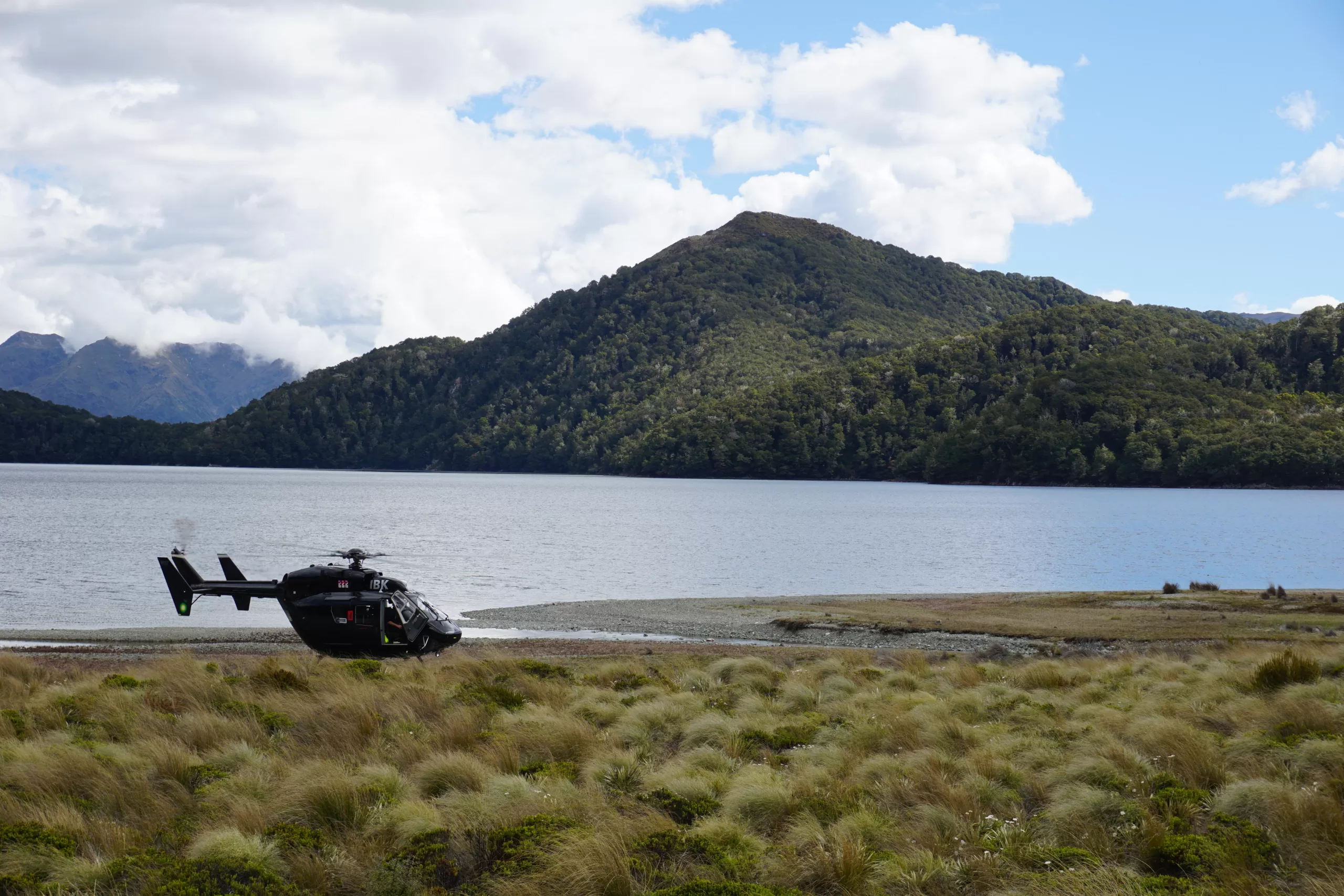This tramping rescue story is part of a series exploring various emergency scenarios in the backcountry. The previous stories involve self-rescuing with one eye, spending one month trapped and alone, dealing with hypothermia, and widow-maker heart attacks. Be sure to check them out if you haven’t already!
Thanks to the lovely Aisling and Simone for sharing their tramping rescue stories for this article!
Tramping Rescue Story: Calling a heli for an injured child
Submitted by Aisling O Riordan @bustsaw_adventures
September, 2023
My son Sawyer and I were walking the Paparoa Track. We’d arrived at Moonlight Tops Hut after our second day of tramping. Sawyer (who was seven years old at the time) was playing with some other kids outside when he slipped on some loose gravel and fell onto his arm. He immediately through he’d broken it, despite never having broken a bone before.
I quickly gave him a once over. There were no protruding bones except for a lump above his elbow, but he was in great deal of pain, so I gave him some Pamol. Another lady at the hut helped to assess him and made him a temporary sling. Sawyer then sat and watched a movie with the other children to try take his mind off the pain.
I was concerned about our location and how we were going to get out of there safely. We still had two days (35km) left to walk out off the track. I was also apprehensive about whether our situation was justified in activating my PLB or calling emergency services, as I understand how precious that resource is.
After chatting with the lady who provided first aid at the hut and noticing the decline in Sawyer, in the end I decided the right thing to do was call emergency services. Sawyer had become pale and was still quite upset and in pain. I was concerned that he might go into shock. We still had cell service, so I called 111 and explained the situation, what had happened and our location. I advised the operator that there was no 4×4 access to the hut. She said she would see what she could co-ordinate.
Helivac
In less than 30 minutes, the helicopter came flying past the window of the hut much to my surprise! I was waiting on a phone call back from the emergency services with a possible plan. I wasn’t prepared, but thankfully the other mums in the hut quickly got all our gear and started stuffing it into our bags ready for extraction.

The paramedics that arrived to the hut administered analgesia and advised it was best for Sawyer to be taken to Greymouth for further examination, so off in the chopper we went. At Greymouth Hospital Sawyer had some x-rays which confirmed a complicated break in his elbow. They did a temporary cast and referred us back to Christchurch for surgery.

The next day, Sawyer had a three hour surgery and three wires installed into his elbow to help repair it. He was in a cast for six weeks, but was itching to get back out there hiking. One week after his cast had come off we were climbing up to Mueller Hut.
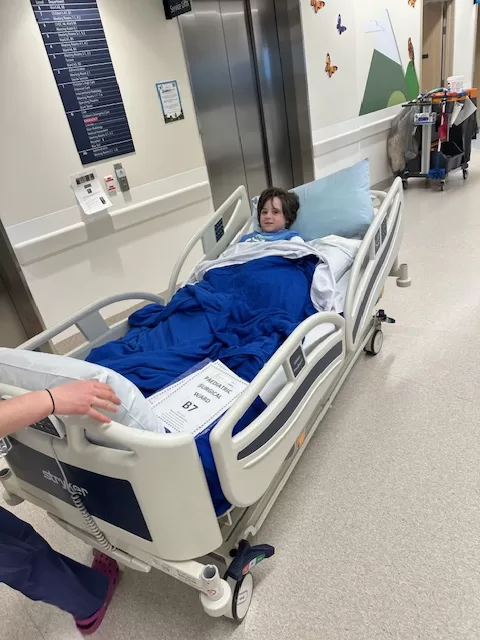
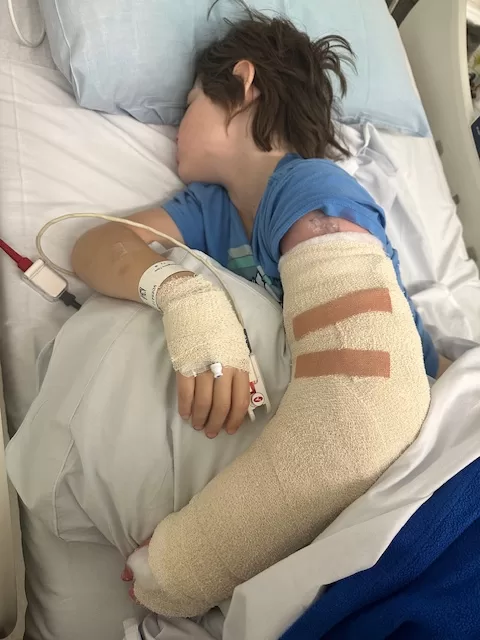
Is there anything you’d do differently?
I never in a million years expected us to be in that situation. We always carry a PLB for ‘just in case’ scenarios. Luckily, I was able to talk directly to the emergency services in this scenario, but I would have activated my PLB had we not. I don’t think we could have prepared or changed what happened. It was a freak accident that could have happened anywhere. It just so happened that for us that “anywhere” was in the mountains on the West Coast.
Tramping Rescue Story: Calling the heli for a stranger
Submitted by Simone Cameron @sgcameron
December, 2022
Myself and two other teacher friends had planned a trip into Green Lake Hut to celebrate the end of the school year. We needed to wind down and decompress. What better way to do that than in the mountains?
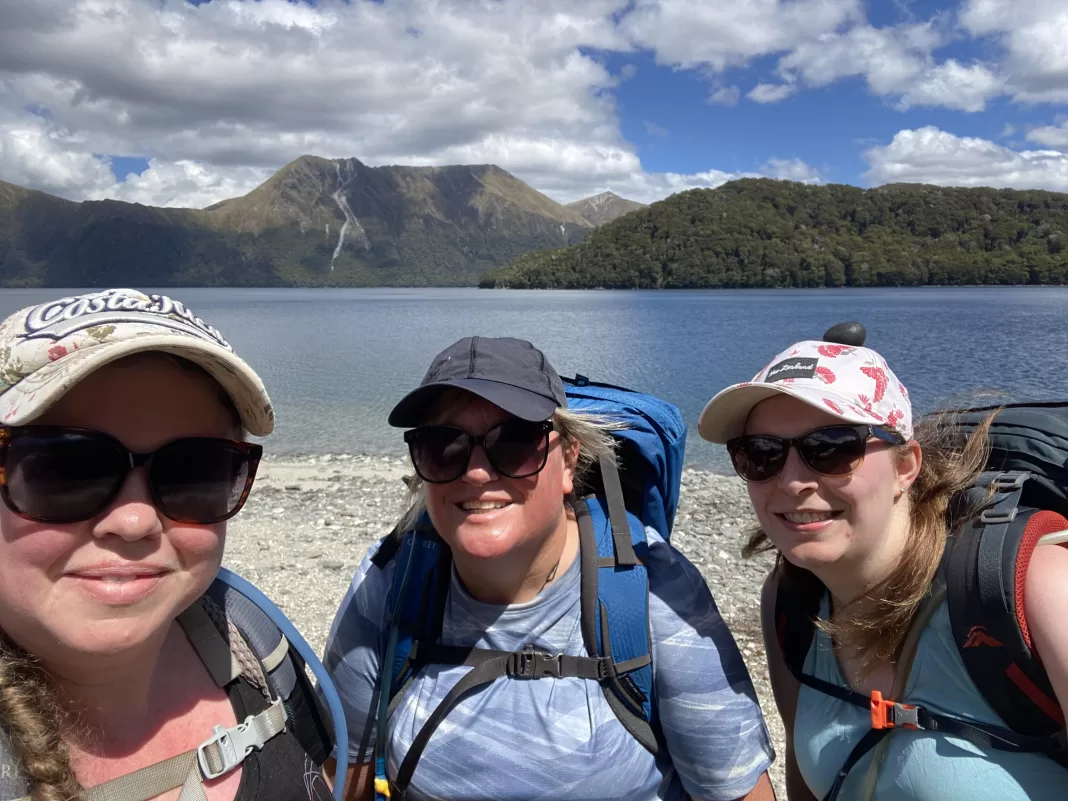
We set off on the track and after we’d been walking for an hour or so, a group of three guys in their mid-20s passed us. They were motoring, obviously a lot fitter than us. Otherwise we didn’t see anyone.
We were really excited when we reached Green Lake as it meant the hut was close. It was a beautiful day and we’d survived the bogs and tussock fields, yay! We walked along the shore for another twenty minutes before the hut came into view. As we approached, we saw the three speedy guys leaving the hut with their packs. I was a little confused. It was early afternoon. Perhaps the (non-bookable) hut was already full?
As they got closer we realised that one guy was carrying two backpacks, and one of the others had his arm in a make-shift sling (we later learned his name was Harry). When they got closer they asked if one of us was a nurse and then asked if we thought his shoulder was dislocated. It was halfway down his arm. So we felt qualified even as non-healthcare professionals, to say yes, it was dislocated.
They were planning on walking out, despite there being many places between the hut and the carpark where you needed both hands to pull yourself up. Although the sun was currently shining, I also knew there was meant to be a big rain front pushing over in the evening. I was concerned that walking out wasn’t the safest option for them.
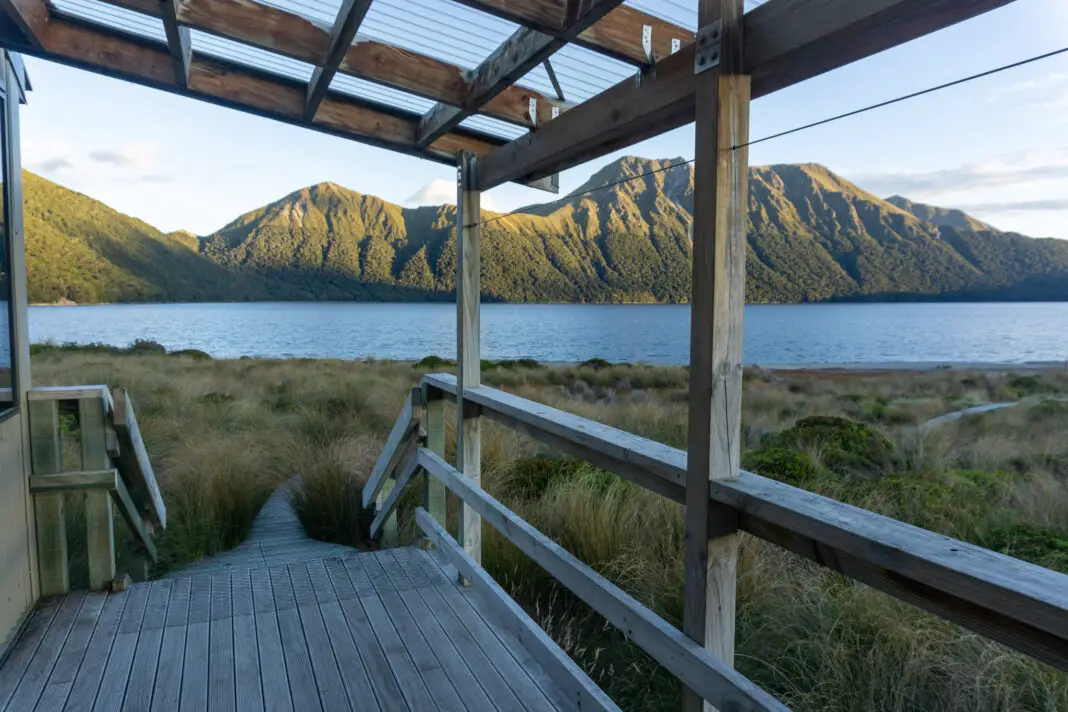
SEND Device
I was carrying my Garmin InReach and told Harry I was happy to use it for him. His two friends looked worried, like they didn’t really want to walk out, but Harry seemed hesitant to call for help. I gave them some encouragement, but then left them to discuss their options, telling them to come back to the hut if they wanted to use it.
Ten minutes later they came up to the hut and asked to set it off. Harry had gone grey by then and looked like he was going into shock. We got him inside the hut and put a sleeping bag around him to keep him warm. Then I went outside to set the InReach off.
After the countdown (to ensure I hadn’t accidentally pushed the emergency button), I immediately received a message from Garmin asking what the emergency was. I could explain that it was a dislocated shoulder (so they knew it was not life-threatening) and could also pass on that it was not a member of my party. Garmin contacted my emergency person to let them know that I had set off my beacon, but that it was for a stranger and we were all okay. They also offered to contact someone for Harry.
They then contacted the NZ Rescue Coordinator Centre who messaged us on the InReach asking to confirm the situation and then let us know when to expect a helicopter. The RCCNZ team let us know when the helicopter was en route, and again when it was going to be delayed by 10 minutes.
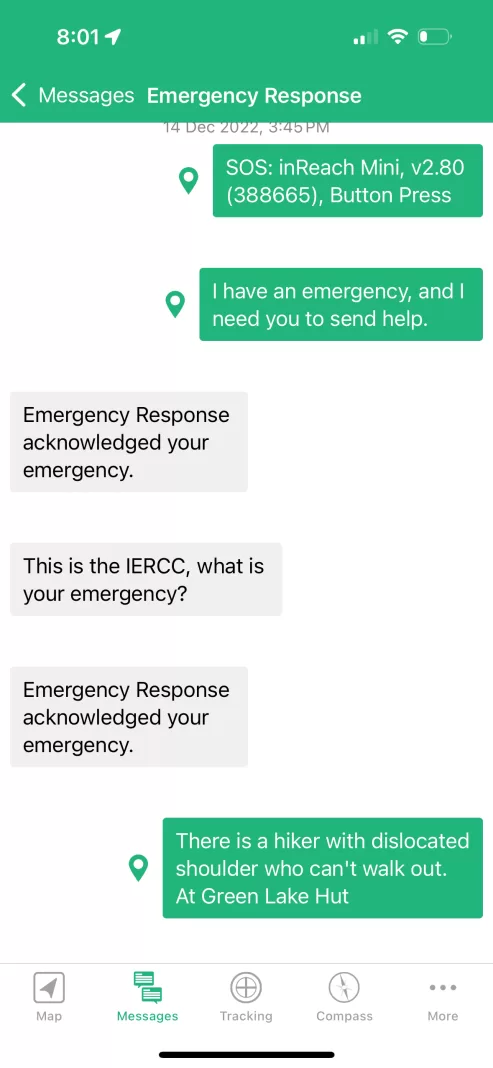
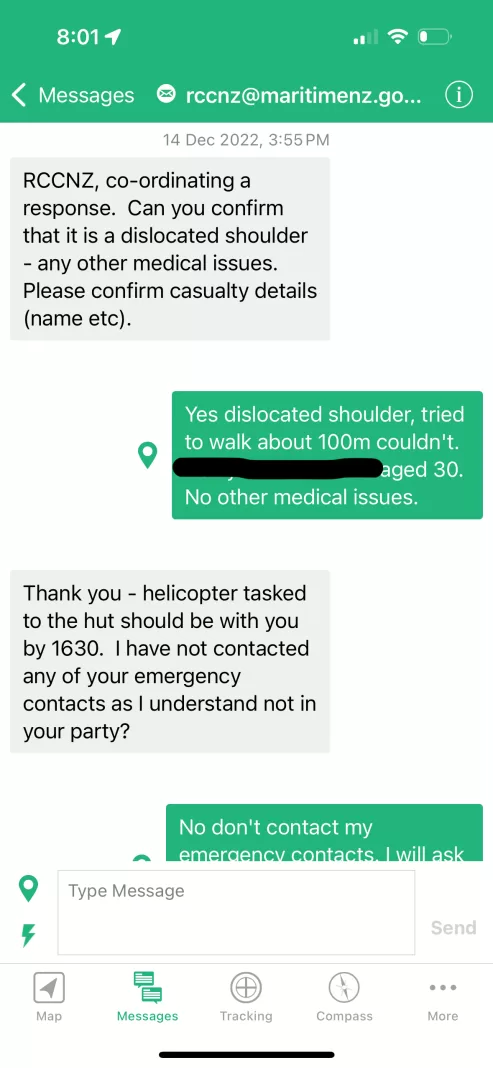

Helivac
The helicopter arrived within 30 minutes of me first hitting the emergency button on my InReach. They assessed Harry and said that he would need to be flown out. They asked him if he wanted to go to Southland Hospital or Te Anau Medical Centre. He chose Te Anau. Within ten minutes of them arriving, they’d walked him to the helicopter and flown off. And within an hour of the helicopter leaving the Fiordland rain came pouring down.
The two members of Harry’s party told us that they had been playing frisbee outside the hut. Harry had slipped on the deck and threw his arm out to catch himself, dislocating his shoulder in the process. He’d gone inside and managed to pop his shoulder back in, but it re-dislocated as soon as he tried to put a top on. Harry contacted me a couple of days later to thank me for setting off the beacon, and said that the medical staff had told him he’d need a non-urgent operation to prevent this from happening again.
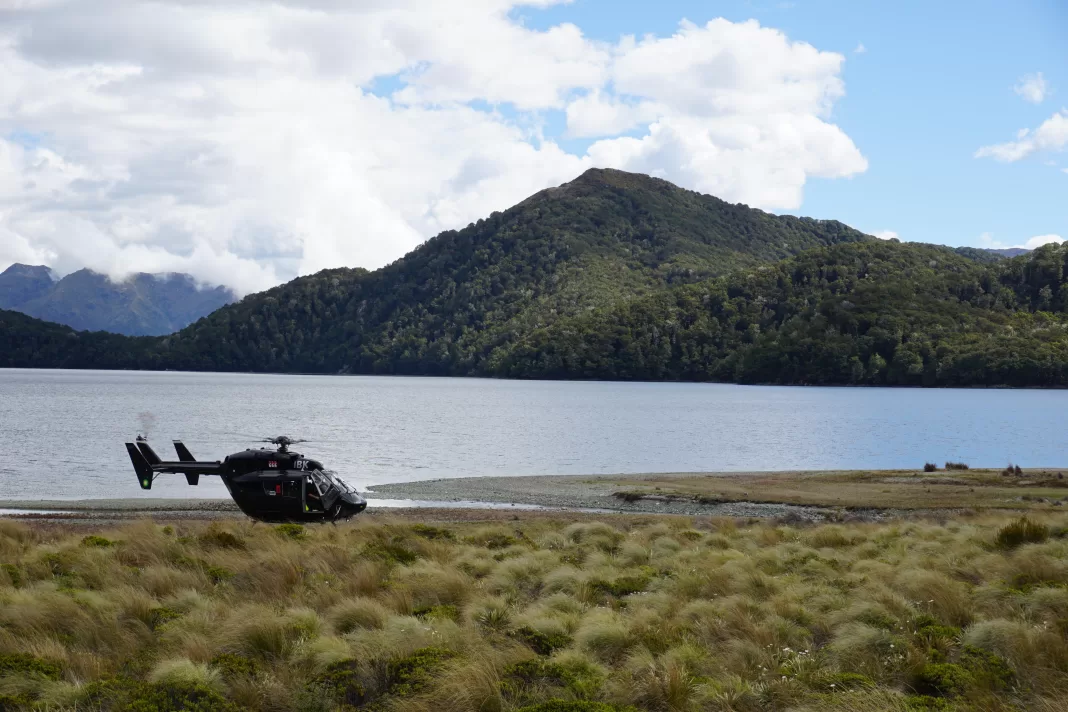
How did you feel in the moment?
Honestly, I was kind of excited! I had an opportunity to test out my InReach, but in a non-life-threatening emergency and not for anyone I personally knew. I was so impressed with the communication and how fast it all happened.
Is there anything you learned from this experience?
That you need people to come to their own decision about needing help, I couldn’t push Harry into making the call. And that having a SEND Device like an InReach that can communicate with emergency services is invaluable. I was just so impressed with the service and communication of all parties involved, and how quickly the extraction happened.
